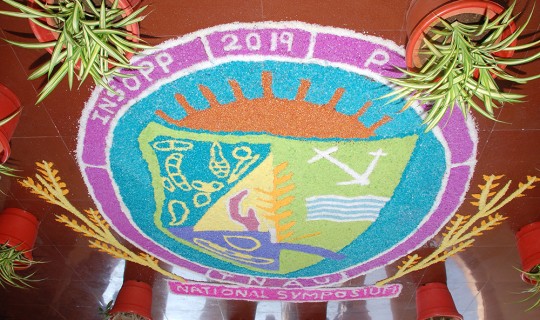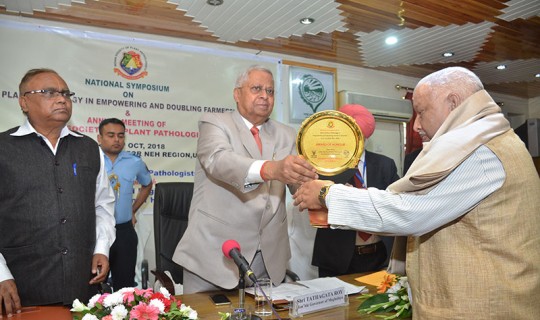Detailed guidelines
for the submissions:
Research Article
The title should be short, specific and
informative. It should include the name(s) of author(s), affiliation (Full name
of institution/ university/ department with PIN
Code, e-mail of the corresponding author. Author names should be without any
titles/ professional affiliations (Mr/Ms/ Dr/ Prof, etc.). Authors are advised to consult the recent issue of the
Journal for following these points carefully and may contact Editor-in-Chief
over e-mail for any other specific query. Title of the manuscript is written in
running and authors’ names are to be in uppercase capitals, with corresponding
author clearly indicated.
ABSTRACT should not be more than 200 words
and should reflect the crux of research findings; avoiding introduction to the
topic. Keywords (four to eight) must be given; include only words which are
not present in the title and these should appear just below the abstract.
INTRODUCTION must be brief and limited to the
problem or the aim and scope of the research. It has to be without any title
heading. In this part, relevant information comprising of one to few sentences
on general introduction, followed by the importance of the research problem and
objectives concisely
should be mentioned. Only relevant and recent
references are to be cited herein. In the last few sentences, the reason for
undertaking the present study and its scope should be written.
MATERIALS AND METHODS must include detailed
methodology, technique(s), experimental design, and statistical methods used
along with the year of experimentation. Generally, more than five years old
data is not considered. The authors should provide the location of the work preferably
with GPS data along with experimental details like treatments, doses,
replications, plot size, crop variety, season, spacing etc.
RESULTS AND DISCUSSION should be under one heading. The data
may be represented in the form of tables, charts, graphics, line drawings, or
pictorial presentation. Self-explanatory tables should be typed on separate
sheets; tables should fit in the normal page layout. Recent and relevant
literature should be discussed critically. All figures including drawings,
graphs, and diagrams should be formatted preferably in MS Word. Images must be
of high quality (minimum 300 dpi resolution), in .jpeg or .tiff format.
Repetition of the same data in graphic and tabular matter needs to be avoided.
ACKNOWLEDGEMENTS may recognise the funding agency
or support received from any sector.
REFERENCES:
These should be arranged in alphabetical order in
the following format:
1.
Research Paper:
Kumari N, Patel P B and Sharma P N (2019).
Screening of capsicum exotic and indigenous lines for resistance against Pepper
mild mottle virus. Plant Disease Research
34: 143-147.
2.
Book Chapter:
Suslow F V (1982). Role of root colonizing bacteria
in plant growth. In: Phytopathogenic
Prokaryotes (Eds. Mount M S and Lacy G H) Academic Press, London, pp.
187-223.
3. Book:
Tuite J (1969). Plant Pathological Methods: Fungi
& Bacteria. Burgess Publishing Company, 239 pp.
4.
Proceedings:
Gupta O P, Singh B
P and Gupta A K (1981). Effect of pre and post-harvest application of chemicals
on the storage behaviour of kinnow mandarin. Presented at the symposium on “Recent Advances in Fruit Development”. Held at PAU, Ludhiana (Abst.)
6.
Thesis:
Aurtha C K (1998).
Management of tomato leaf curl virus through the control of white fly vector, Bemisia
tabaci Genn. by entomopathogenic fungi. Ph.D.
Thesis, University of Agricultural Sciences, Bangalore, 226pp.
7.
Newsletter:
Smith J K (2006,
December). New developments in plant disease management. Plant Pathology
Newsletter, 15, 7-9.
8.
Websites (e.g., FAO):
FAO (2023). Crop and livestock products
retrieved from
https://www.fao.org/faostat/en/#data/QCL
The authors are required to verify that the
included references are cited in the text and that those that are cited are listed
alphabetically in the REFERENCES Section. References from the recent five-year
period should be at least 25% of all references. Authors must take enough care
to follow spacing, full-stop, colon, semi-colon, comma, etc., strictly as per journal format.
Short Communication
Authors are to follow the above instructions in toto,
except that such communication will have no headings like Materials and Methods
and Results and Discussion but these are to be provided in separate paragraphs. In
all other aspects, the format is the same as the Research Article.
Review Article
Except for Materials and Methods/ Results and
Discussion (no such headings will be there) these are the same as mentioned above.
Authors to peruse the Review Articles published in the recent issue of the
journal for strict adherence. Reviews must comply with the prerequisites of
plagiarism check and a check report to be appended along with the submission.
Authors should observe high standards with respect
to publication ethics including authorship. Any case of ethical misconduct is
treated very seriously. All work submitted to Plant Disease Research should be novel, rigorous, and substantial,
and the editors may make plagiarism checks at any time after submission.
Articles not adhering to the set guidelines are liable to be rejected. Authors
may contact the Editor-in-Chief for any queries/grievances etc., at the e-mail- insopp1984@gmail.com




